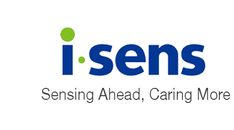
Hypoglycemia: Low Blood Sugar (Glucose)
Hypoglycemia: Low Blood Sugar (Glucose)
Hypoglycemia is a medical term that refers to low blood glucose levels.1 It is categorized into three levels based on blood glucose concentrations.
- Level 1 hypoglycemia: glucose levels <70 mg/dL and >54 mg/dL
- Level 2 hypoglycemia: glucose levels <54 mg/dL
- Level 3 hypoglycemia: a severe event with impaired physical and/or altered mental functioning that requires assistance from another person
What Causes Hypoglycemia?
Normally, several physiological mechanisms prevent hypoglycemia in individuals without diabetes.2 When glucose levels drop, insulin secretion decreases to reduce glucose consumption by insulin-sensitive tissues while glucagon and epinephrine secretion increases to promote hepatic glucose production. These mechanisms effectively return blood glucose levels back to normal.
Type 1 Diabetes Mellitus (T1DM) – Individuals with T1DM have a severe deficiency of endogenous insulin due to the autoimmune destruction of pancreatic b-cells and often rely on exogenous insulin administration.3 In the absence of the body’s negative feedback control of insulin production, continuous glucose monitoring (which can be integrated with an automated insulin pump) or frequent glucose testing is needed to minimize hypoglycemia.4 Additionally, the impaired glucagon and epinephrine responses in those with T1DM means that the body is unable to stimulate hepatic glucose production to counteract hypoglycemia.2
Type 2 Diabetes Mellitus (T2DM) – Hypoglycemic episodes are much less common in individuals with T2DM.2 However, in advanced T2DM when individuals begin experiencing insulin deficiency, glucose counterregulatory impairments begin to manifest and hypoglycemia becomes more frequent.
What Are the Symptoms of Hypoglycemia?
The following neurogenic symptoms begin to show as hypoglycemia triggers the autonomic nervous system.2,5
- Sweating
- Hunger
- Paresthesia (pin-and-needles sensation)
- Anxiety
- Palpitations (racing heartbeat)
- Tremulousness
The following neuroglycopenic symptoms result from the lack of glucose to the brain and begin to show from level 2 hypoglycemia. Immediate action is required.
- Weakness
- Fatigue
- Confusion
- Difficulty in thinking
- Speech disturbances
- Sensations of warmth
- Blurred vision
- Behavioral changes
- Emotional lability (mood swings)
- Seizures
- Loss of consciousness
What Is Hypoglycemia Unawareness?
Hypoglycemia unawareness refers to not experiencing symptoms of hypoglycemia despite blood glucose concentrations dropping below 70 mg/dL.2 Experts generally agree that hypoglycemia unawareness is caused by impaired sympathoadrenal responses from frequent hypoglycemic episodes.2,5 The reduced sympathoadrenal responses attenuate the neurogenic symptoms that normally accompany hypoglycemia.
Hypoglycemia unawareness is more common in individuals who have been diagnosed with diabetes for a long period of time and tightly manage their diabetes. As those with hypoglycemia unawareness are at a greater risk of blood glucose levels decreasing to dangerously low levels, it is important for them to frequently monitor their blood glucose, especially when performing critical tasks. Using a continuous glucose monitor can be helpful.
How Can I Treat Hypoglycemia?
As individuals who experience severe hypoglycemia are at a greater risk of cardiovascular morbidity and mortality, it is important to prevent and promptly treat each episode.5 Most hypoglycemic episodes can be self-treated by taking glucose tablets or consuming carbohydrates (eg, juice, crackers, soft drink, or a meal).2,5 After an initial ingestion of 20 g of glucose, symptoms should be monitored, and the process should be repeated in 15-20 minutes if symptoms persist or if blood glucose levels remain low. It is advised to eat a meal or a snack shortly after as the response to oral glucose can be transient.
In severe cases where the individual is unable or unwilling to take glucose tablets or consume carbohydrates, parenteral therapy is required. Parenteral glucagon is often used to treat hypoglycemic episodes in individuals with T1DM. Intravenous glucose is the preferred treatment for severe and prolonged hypoglycemia, often caused by sulfonylurea, in individuals with T2DM.
|
References: |
(Disclaimer)
The content of this article is intended to provide a general information and knowledge on the subject matter. The views expressed in newsletters, articles, and blogs in the i-SENS USA website are not necessarily those of i-SENS Incorporated, i-SENS USA Incorporated or our publishers. Medical or nutritional information on i-SENS USA website is not intended to replace professional medical advice – you should always consult a specialist with any questions about your specific circumstances.





Add a comment